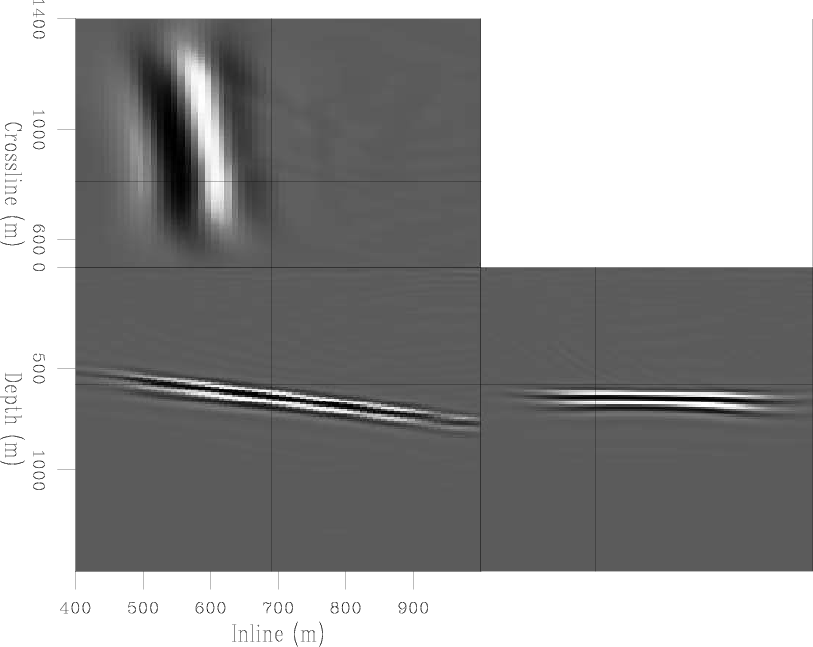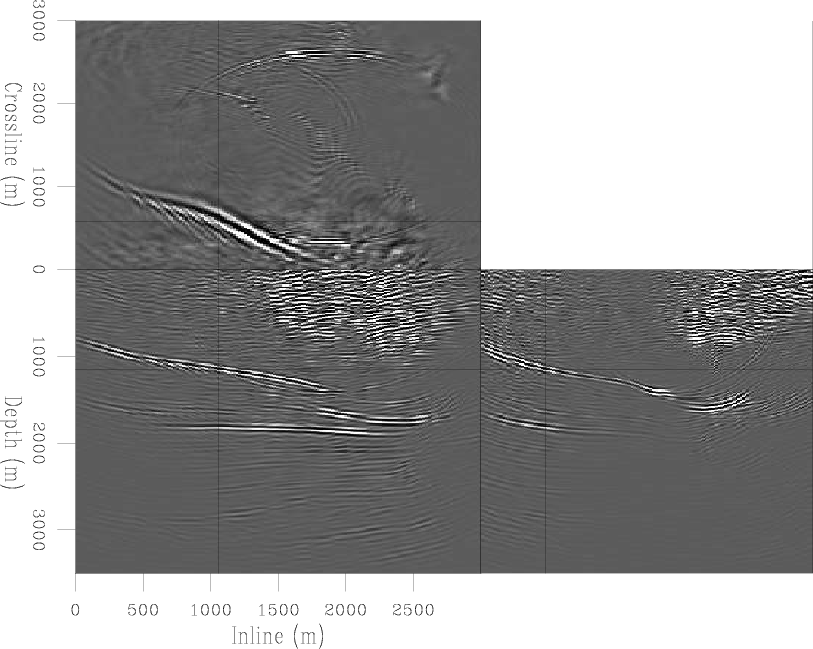|
|
|
|
Memory efficient 3D reverse time migration |
Using the latest SEAM velocity model both 2D and 3D random boundary migration routines were experimented with. A simple RTM result using a 2.5D dipping reflector is shown in Figure 7; this was created using a single shot at 20m depth and then applying a very low cut filter. Here very little background noise can be seen from the random boundaries, and with more shots this will reduce further. Few of the typical RTM artifacts are seen because of the simplistic nature the ray paths take in this model - all multiples and direct arrivals are muted and there is no multi-pathing or overturning of waves.
In the vastly more complex SEAM model multiple shots are required to suppress artifacts, especially since there are now many more conventional RTM artifacts due to the basic imaging condition used, such as those from correlating wavefields travelling in the same direction. Currently more work must be undertaken to ensure the velocity model is fully block-aligned in the GPU and the determine the best approach to begin to suppress these new imaging artifacts; a basic one shot RTM over the SEAM model can be seen in Figure 8. Some reflectors are noticeable and continuous, however there are several erroneous events and a lot of shallow noise.

|
|---|
|
basicimg
Figure 7. RTM result using one shot over a single dipping reflector |
|
|

|
|---|
|
seamimg
Figure 8. RTM result using one shot over a windowed section of the SEAM model |
|
|
|
|
|
|
Memory efficient 3D reverse time migration |